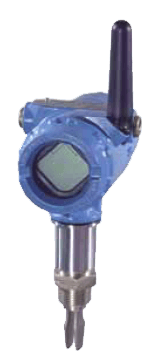For oil & gas, chemical, petrochemical, and pharmaceutical producers, measuring levels in tanks is an important component for inventory management. I saw a write up by Emerson’s Kevin Cullen that describes how level measurement is not only important for inventory management, but also for overspill protection—where hazardous or environmentally damaging liquids are involved.
Kevin notes that maximizing tank capacity, while minimizing the risk of hazardous spillage and overfill, can be achieved with a combination of level measurement devices and level switches. Top-down radar transmitters offer a precise level measurement that is independent of the fluid properties.
 Non-contacting radar and guided wave radar are two technologies that are effective in storage tank level measurement applications. In an earlier post, Radar Level Measurement Beginnings, Types, and Applications, I described these two radar technologies. They are a good fit because they have no moving parts, not dependent on the density of the liquid being measured, and not impacted by high turbulence or vibrations. The signal from these radar level measurement devices can be used by the control system to generate alarms based upon high level, low level, and deviation conditions.
Non-contacting radar and guided wave radar are two technologies that are effective in storage tank level measurement applications. In an earlier post, Radar Level Measurement Beginnings, Types, and Applications, I described these two radar technologies. They are a good fit because they have no moving parts, not dependent on the density of the liquid being measured, and not impacted by high turbulence or vibrations. The signal from these radar level measurement devices can be used by the control system to generate alarms based upon high level, low level, and deviation conditions.
From a process safety management perspective, if the liquid levels being measured require risk mitigation, levels of redundancy can be added. The safety integrity level (SIL), the level of safety required, is determined by carrying out a full safety assessment and review of the process. The protection system should then be designed to satisfy the SIL level determined by the safety review.
Installing level switches adds another layer of protection. Often independent high-level switch devices are fitted to the tanks. This provides a secondary method of overspill protection. Alarms are derived from fixed position switches or probes within the tank, which operate when the liquid makes contact with them. These are used in addition to the measurement-derived high-level alarms.
Displacers and floats have been commonly used in tank level switch applications. These provide a very basic indication of when the contents of the tank have reached a specific level and trip a high level or extra high-level alarm. Their downside is the possibility of build-up on the displacer element impacting accuracy and their mechanical nature making them prone to wear and failure. With a simple on/off signal from a hardwired displacer level switch, it is not possible to tell the difference between a stuck switch and an actual high-level condition, nor if the switch is damaged or failed. Technicians periodically have to go to the field to perform checks just to be sure, often to find nothing wrong.
 An alternative to displacers and floats is vibrating fork devices. These level switches operate on the principle of a tuning fork, whereby an internal piezo-electric crystal oscillates an external fork at its natural frequency. The frequency changes depending on the medium in which it is immersed—the denser the liquid, the lower the frequency. Thus, the frequency is different depending on whether the fork is immersed or dry. These devices also have no moving parts other than the vibrating fork so they require little maintenance and have high reliability.
An alternative to displacers and floats is vibrating fork devices. These level switches operate on the principle of a tuning fork, whereby an internal piezo-electric crystal oscillates an external fork at its natural frequency. The frequency changes depending on the medium in which it is immersed—the denser the liquid, the lower the frequency. Thus, the frequency is different depending on whether the fork is immersed or dry. These devices also have no moving parts other than the vibrating fork so they require little maintenance and have high reliability.
Diagnostics can alert operators if there is media build-up on the fork, external damage to the fork, internal damage to the piezo, or excessive corrosion. Build-up of material on the vibrating fork is detected in the early stages and flagged as an advisory alarm. This alarm enables operations to schedule cleaning of the forks before build-up accumulates to the point where it causes a false process state indication.
Kevin notes that in cases where risk needs to be managed using a safety instrumented system (SIS), level transmitters such as the Rosemount 5300 radar and 2130 vibrating fork are suitable for SIL 2 rated applications.
Kevin also highlighted the fact that many storage tank locations, due to economic considerations, lack the infrastructure for wired runs back to the control system. Wireless vibrating fork devices, such as the Rosemount 2160, enable automated overspill protection to be applied. Radar devices coupled with wireless adapters, which provide wireless connectivity for conventional wired devices, can transmit the level values back to the control system.
To follow level instrumentation-related discussions and ask questions of peers in the community, visit and join the Emerson Exchange 365 Level track.
